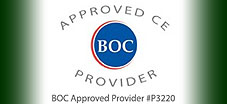 |  |  |  |
 |  |

|
The Book Learn the secrets of elite runners and you too will run faster with less effort.  The book "Efficient Running" is a guide to the biomechanical characteristics
that research has shown to be common to efficient runners. One of the age
old myths of running is that efficient form simply develops naturally over
time. To see that this is not true, one must only watch a road race and pay
particular attention to the mid-pack and beyond. While it is true that a number
of these runners may be new to the sport, it is also true that many have been
running for years yet some how, "efficient" form has alluded them.
The book "Efficient Running" is a guide to the biomechanical characteristics
that research has shown to be common to efficient runners. One of the age
old myths of running is that efficient form simply develops naturally over
time. To see that this is not true, one must only watch a road race and pay
particular attention to the mid-pack and beyond. While it is true that a number
of these runners may be new to the sport, it is also true that many have been
running for years yet some how, "efficient" form has alluded them. Efficient runners are easy to spot. We all recognize the smooth, fluid stride of an elite runner, but, what are the particular characteristics that create that smooth stride? Researchers have studied and identified a number of characteristics that these elite runners seem to have in common. Some include: average or smaller than average height for men and slightly taller than average height for women; low percentage body fat; narrow pelvis and smaller than average feet. If you happen to possess those characteristics, congratulations. If not, don't despair. Research has also identified a number of characteristics that a runner has more control over. Some of these are: less bounce, or up and down movement; greater knee bend of the support leg; tendency toward a mid to rear foot strike; less arm motion; slight forward lean. The benefits of each is discussed in detail. Learn how bounce is a direct result of overstriding (initial ground contact forward of center of gravity). See that greater knee bend of the support leg produces plyometric energy and also puts the foot and knee in optimal position to absorb shock. Realize that this bent knee landing then leads naturally to a relatively level or mid-foot strike that occurs ideally, with the foot already moving rearward. Learn the importance of the arms during running. See how the foot will land only as far forward as the opposite hand is allowed to travel (keeping it close to your chest will keep you from overstriding). Then see that elbow drive back will provide additional power to the opposite foot at toe off. Finally, learn to beat gravity at its own game with a little forward lean. The old adage, ears over shoulders over hips just doesn't measure up when you are watching the lead pack. Running, or maybe that should be efficient running, has at its core, certain fundamentals or techniques. These fundamentals, if performed properly, will result in not only faster times, but will also generate significantly less impact forces into the body. Less impact force will decrease the chance of injury. Once you understand and apply the principles outlined in this book, you will soon be running more comfortably and faster then you ever thought possible. The biomechanical characteristics of efficient running are explained in a very clear and concise manner. In addition, some very simple visualization techniques to help you apply these characteristics to your own running are discussed. Also included in the book is a series of exercises that are intended to facilitate the mechanics of proper running form. This book is a must have for runners and running coaches of all levels. If you doubt this, consider the fact that a typical run consists of thousands of steps. Now, think about the cumulative effect of improving each of those steps even marginally... You get the picture. If you would like to buy the book, please visit our store. (return to top) © 2007 Stride Mechanics, LLC. 
|
